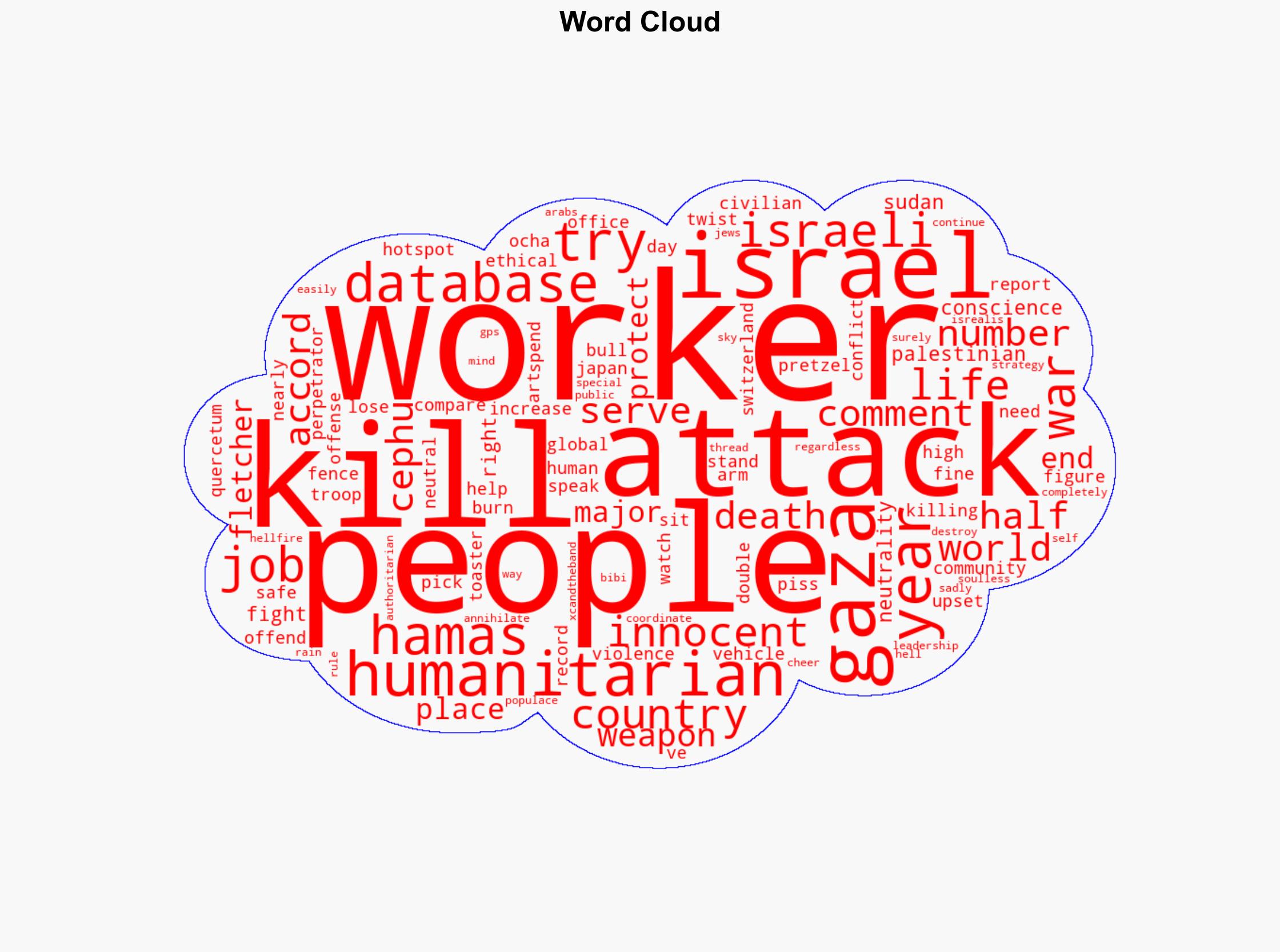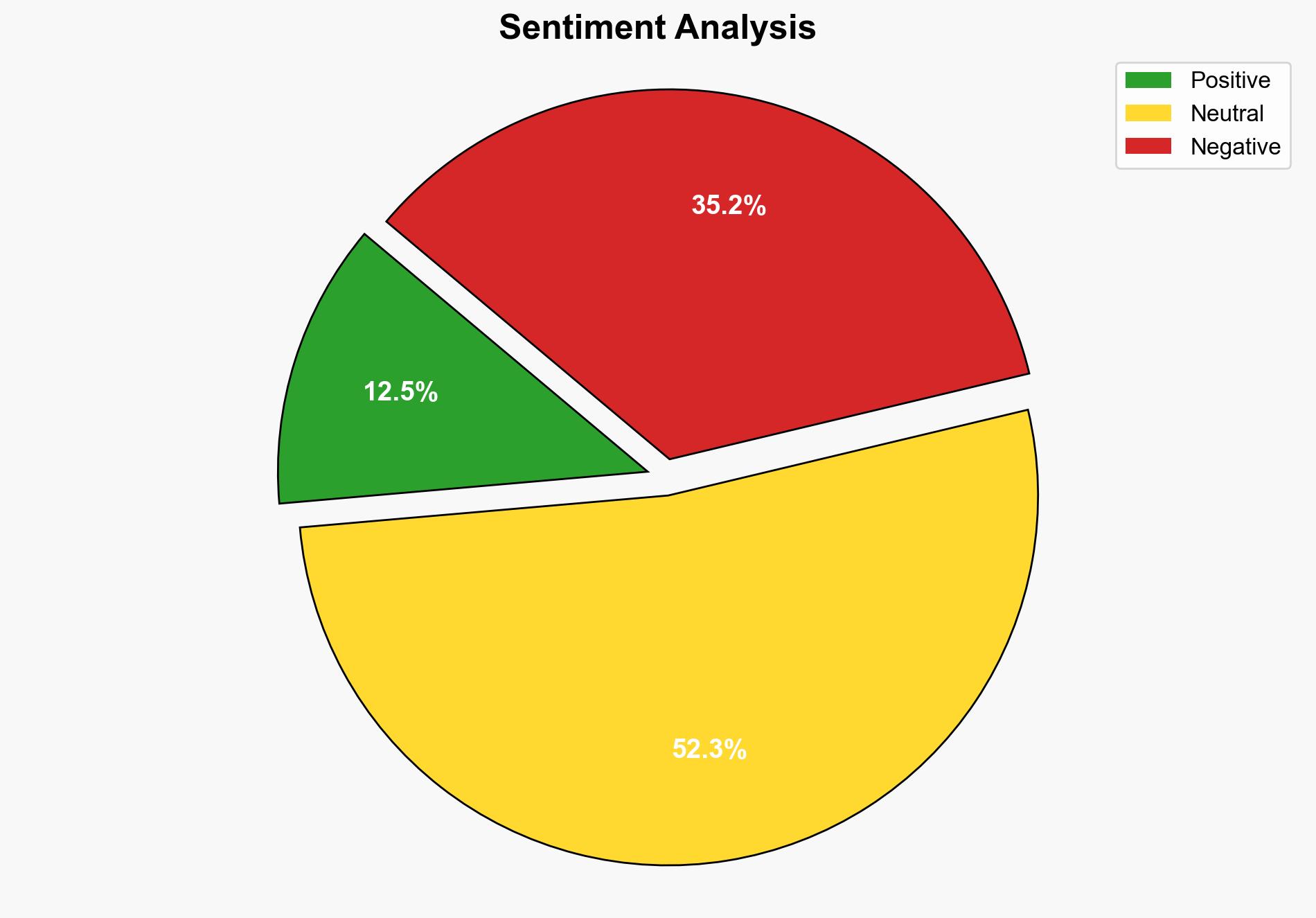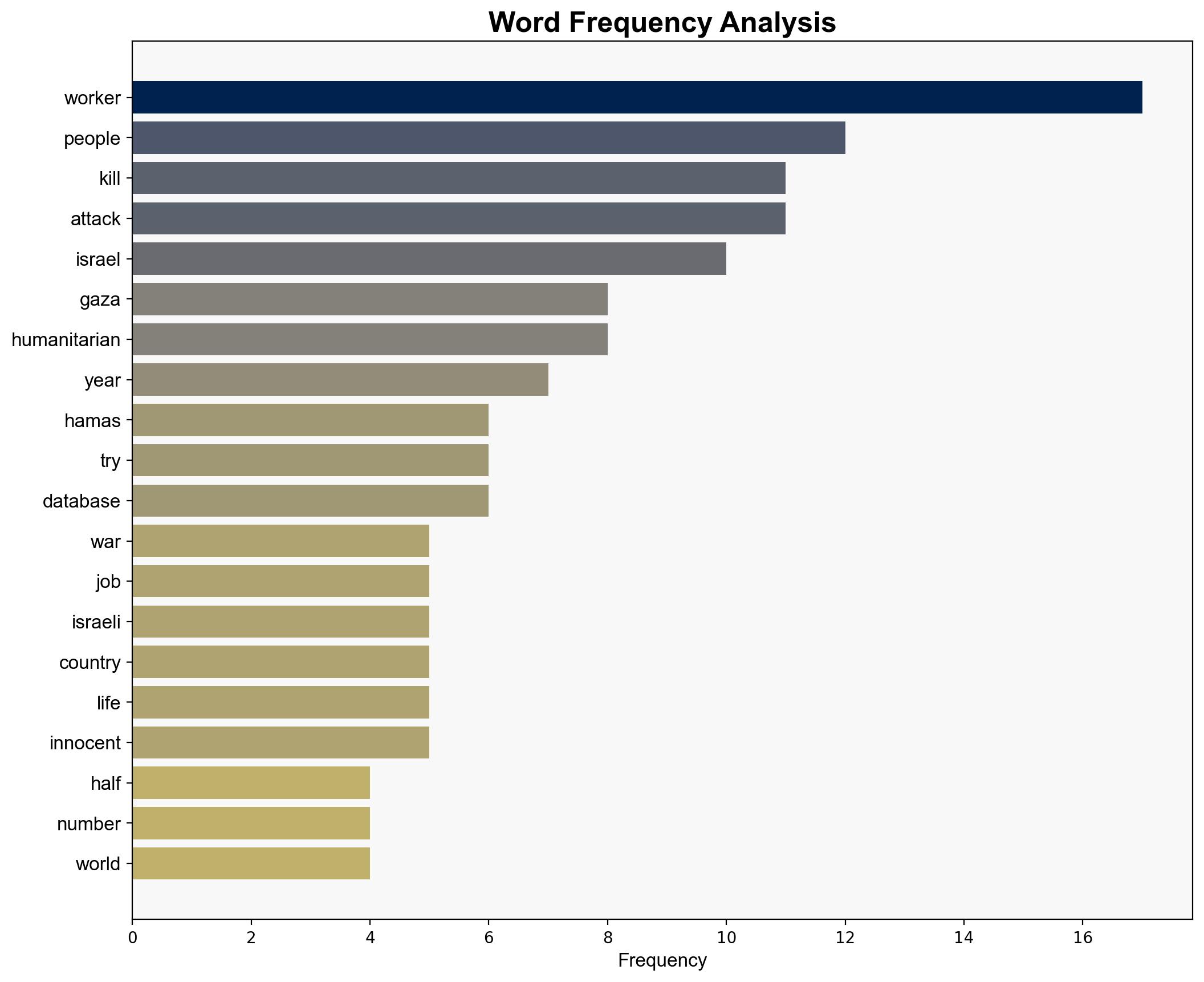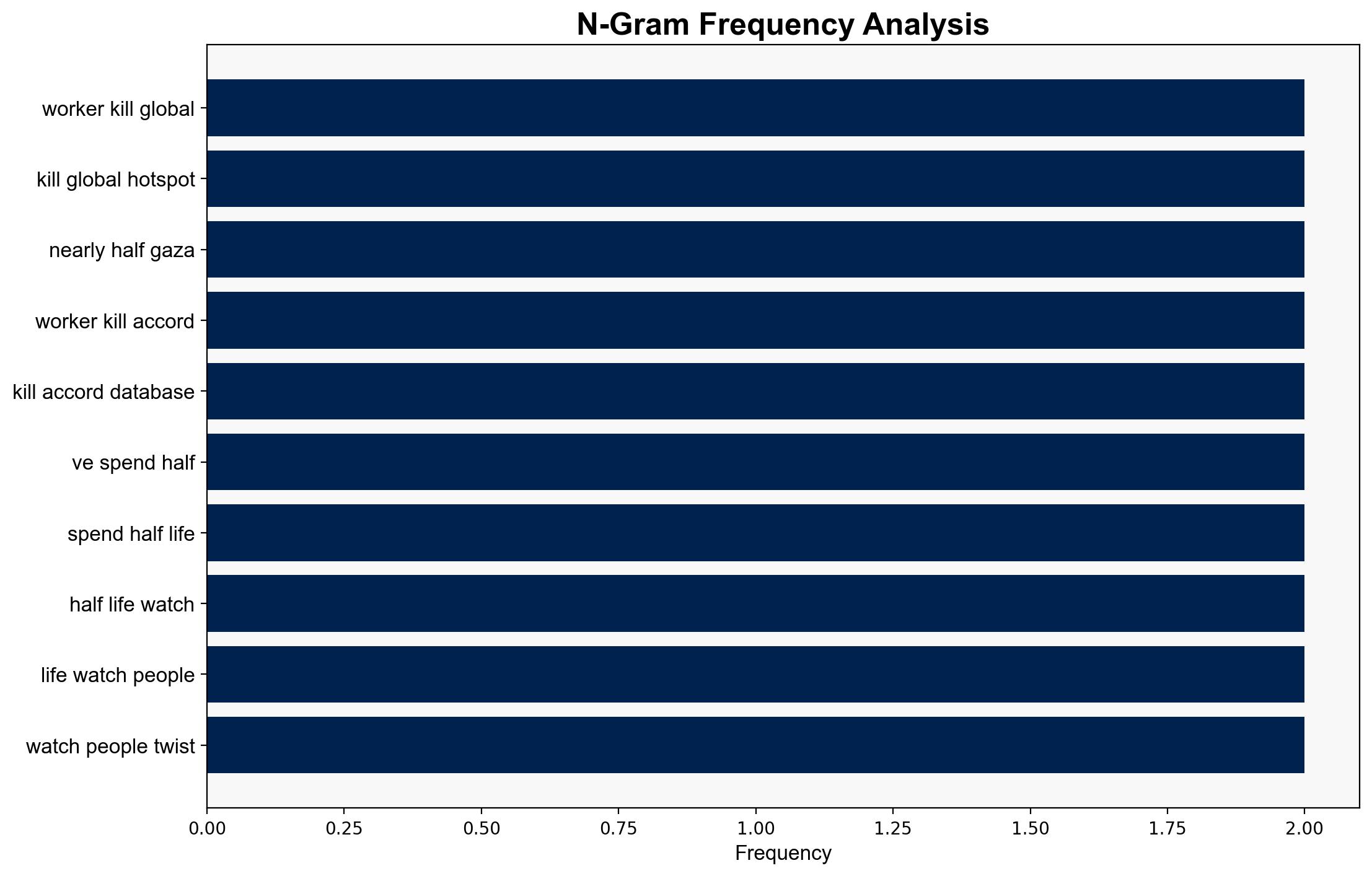A record 383 aid workers were killed in global hotspots in 2024 nearly half in Gaza UN says – Japan Today
Published on: 2025-08-19
Intelligence Report: A record 383 aid workers were killed in global hotspots in 2024 nearly half in Gaza UN says – Japan Today
1. BLUF (Bottom Line Up Front)
The most supported hypothesis is that the high number of aid worker casualties in Gaza is primarily due to intensified military operations and lack of adherence to international humanitarian laws by involved parties. Confidence level: Moderate. Recommended action: Increase diplomatic pressure on conflicting parties to adhere to international humanitarian standards and enhance protective measures for aid workers.
2. Competing Hypotheses
Hypothesis 1: The increase in aid worker casualties is primarily due to intensified military operations and disregard for international humanitarian laws by both Israeli and Hamas forces.
Hypothesis 2: The rise in casualties is largely attributable to systemic failures in the protection protocols for aid workers and insufficient international response mechanisms.
Using ACH 2.0, Hypothesis 1 is better supported by the evidence of direct military actions resulting in aid worker deaths, such as the incident in Rafah. Hypothesis 2 lacks specific evidence of systemic failures being the primary cause.
3. Key Assumptions and Red Flags
Assumptions:
– Military operations in Gaza are not sufficiently regulated by international humanitarian laws.
– Aid workers are targeted due to their proximity to conflict zones.
Red Flags:
– Potential bias in reporting from sources with vested interests.
– Lack of comprehensive data on the exact circumstances of each casualty.
4. Implications and Strategic Risks
The continued targeting of aid workers could lead to a decrease in humanitarian assistance in conflict zones, exacerbating civilian suffering. There is a risk of escalating tensions if international actors fail to intervene effectively. The situation could also lead to increased radicalization and recruitment by extremist groups exploiting the humanitarian crisis.
5. Recommendations and Outlook
- Enhance diplomatic efforts to enforce international humanitarian laws in conflict zones.
- Develop and implement robust protection protocols for aid workers.
- Scenario Projections:
- Best: Successful international intervention reduces casualties and stabilizes aid delivery.
- Worst: Continued inaction leads to further escalation and humanitarian disaster.
- Most Likely: Incremental improvements in protection measures with ongoing challenges.
6. Key Individuals and Entities
Tom Fletcher (Humanitarian Chief), Israeli military, Hamas forces.
7. Thematic Tags
national security threats, humanitarian crisis, international law, regional conflict





